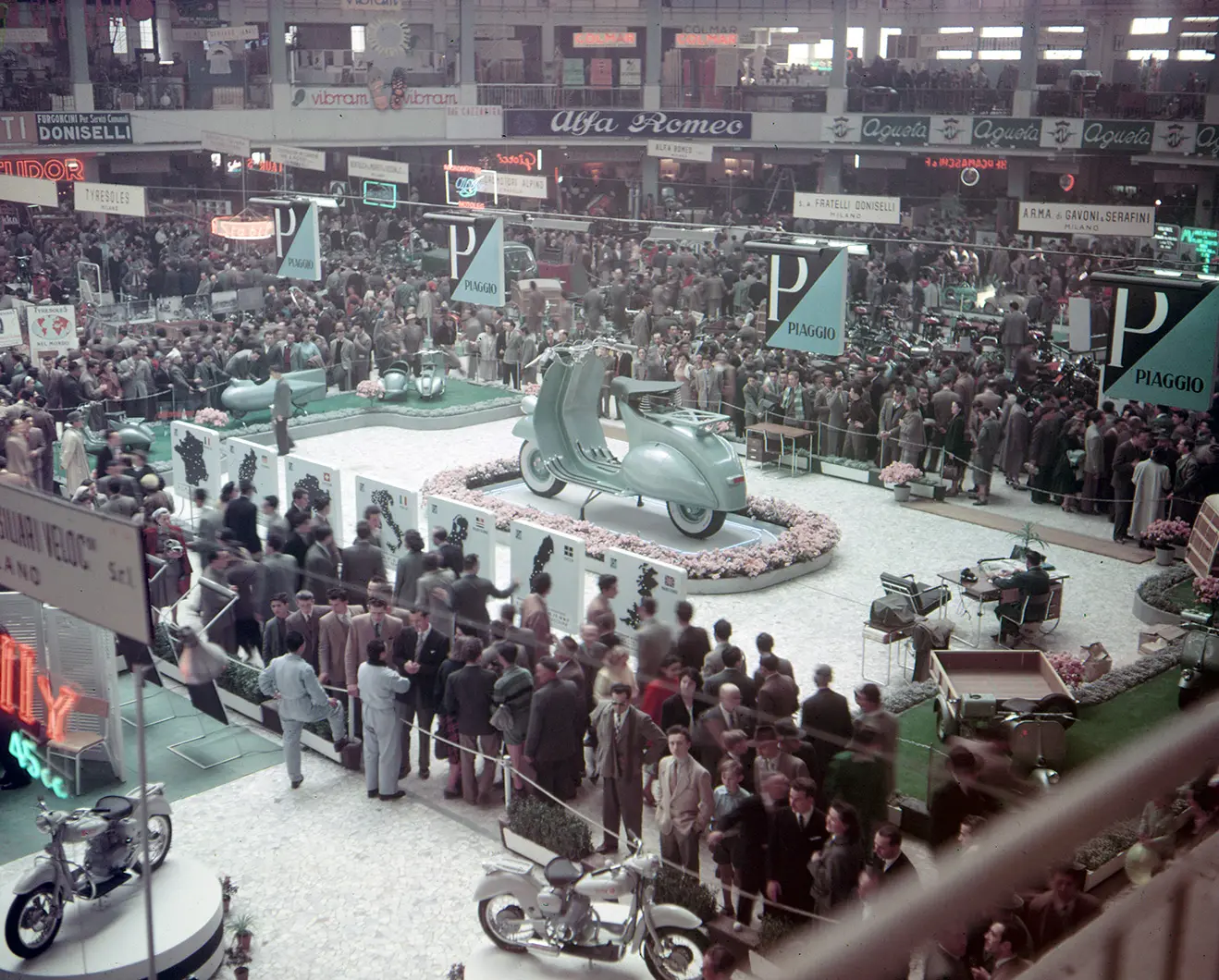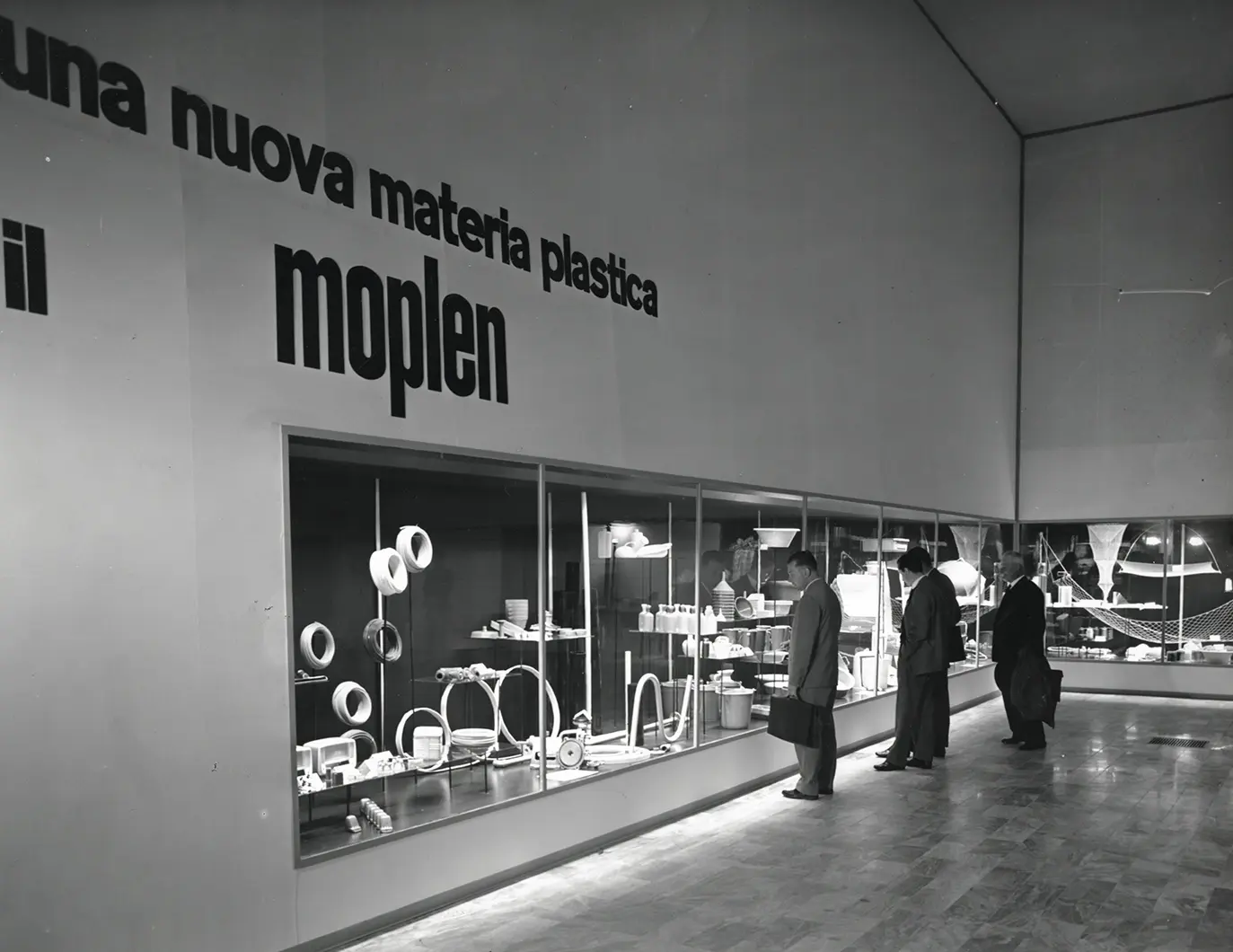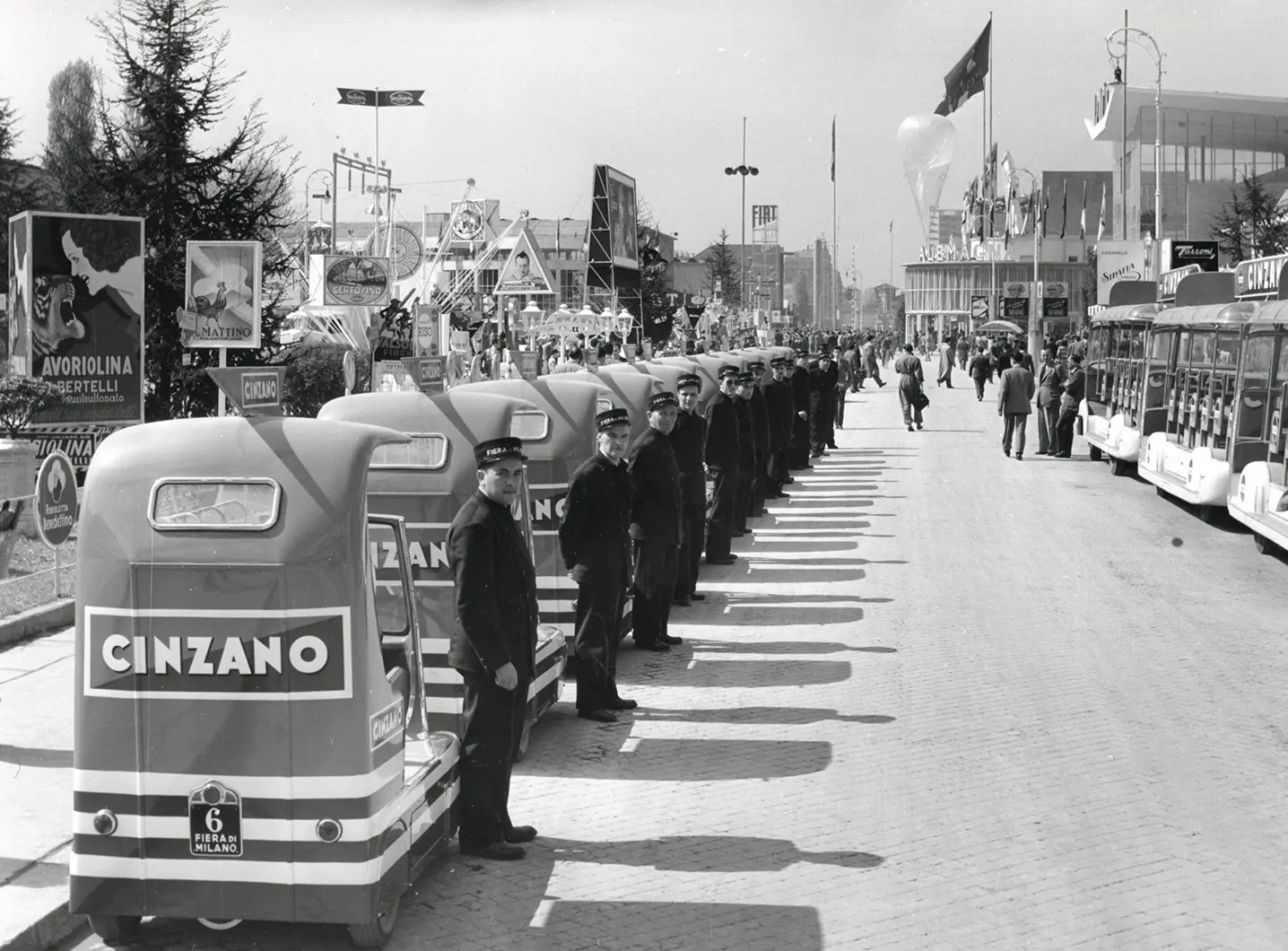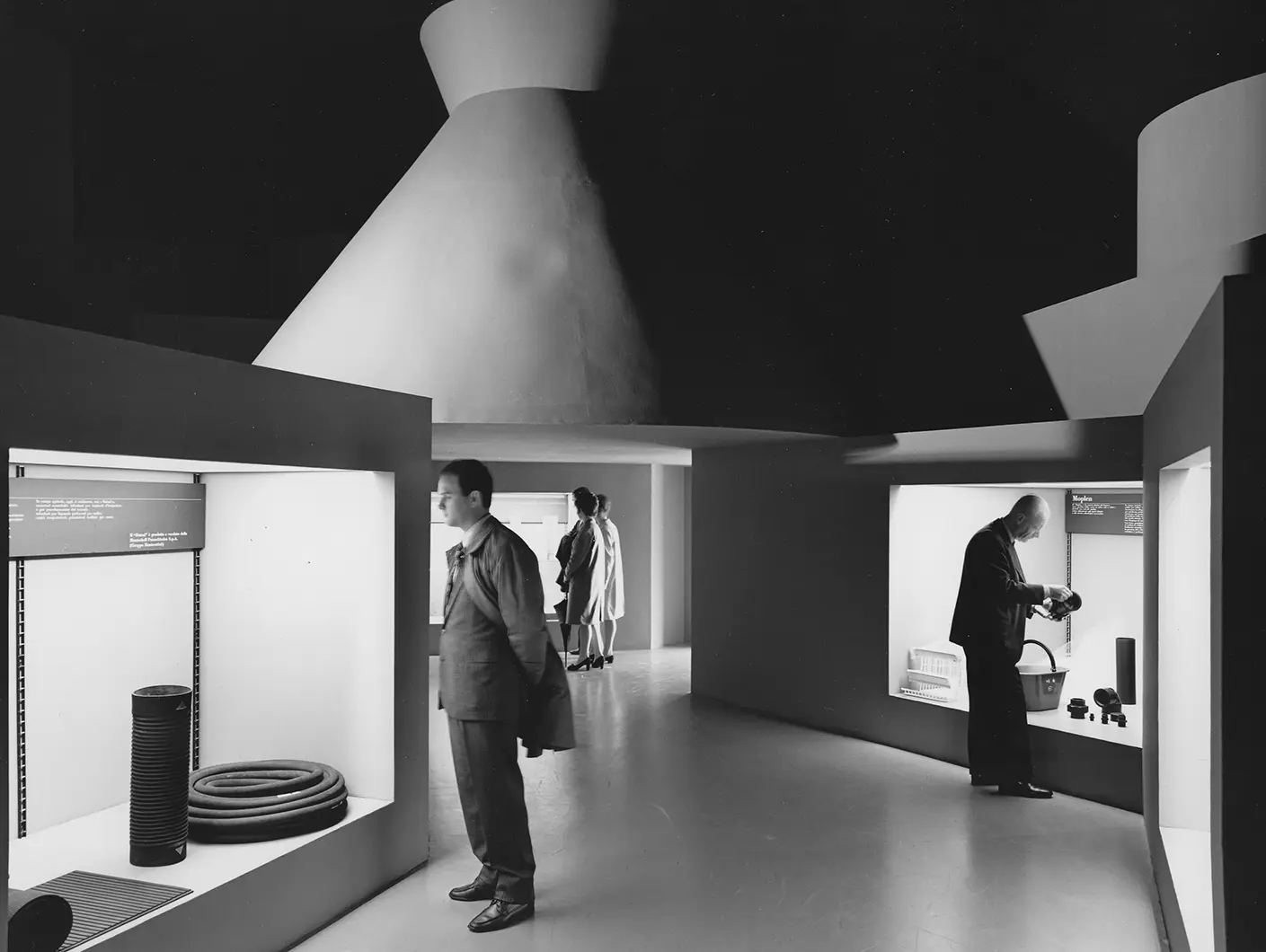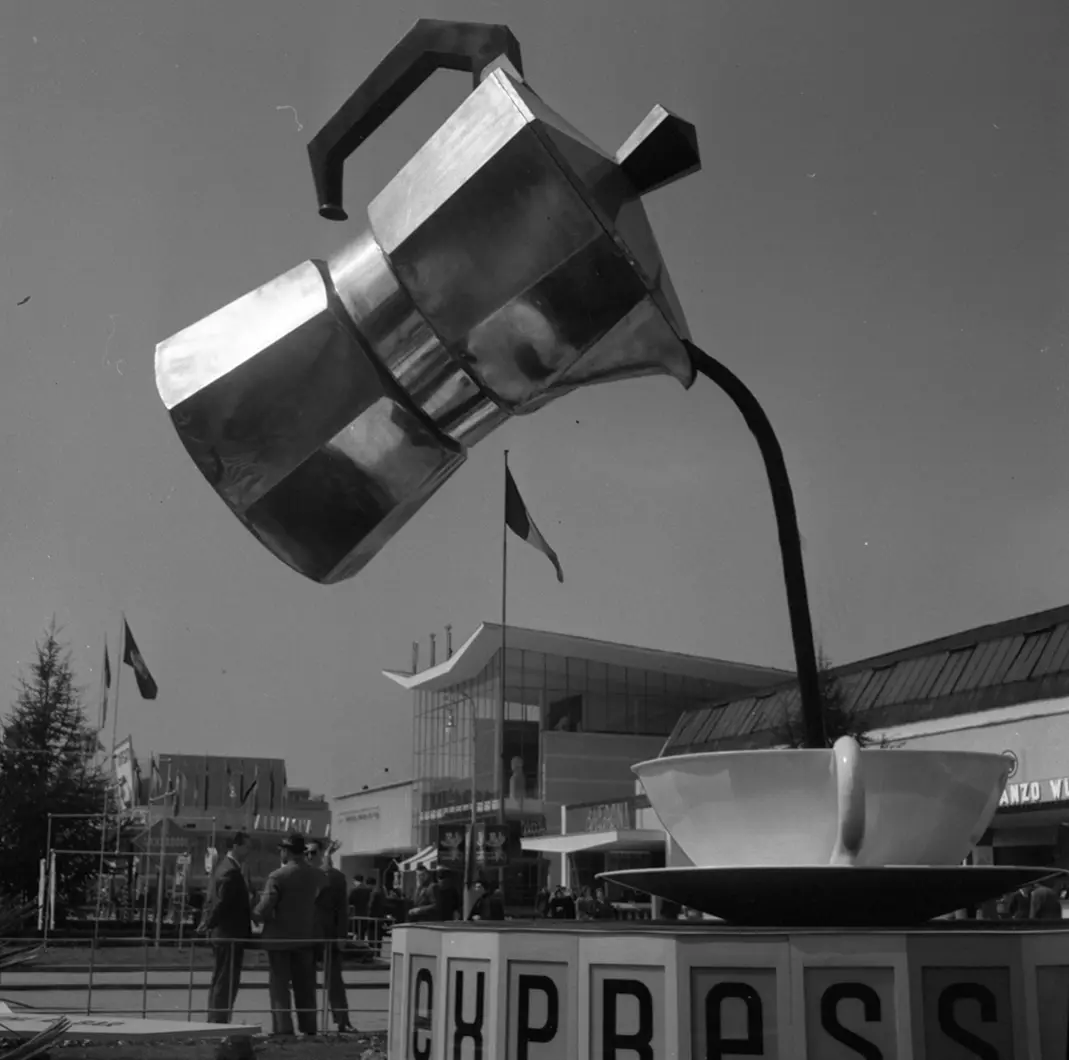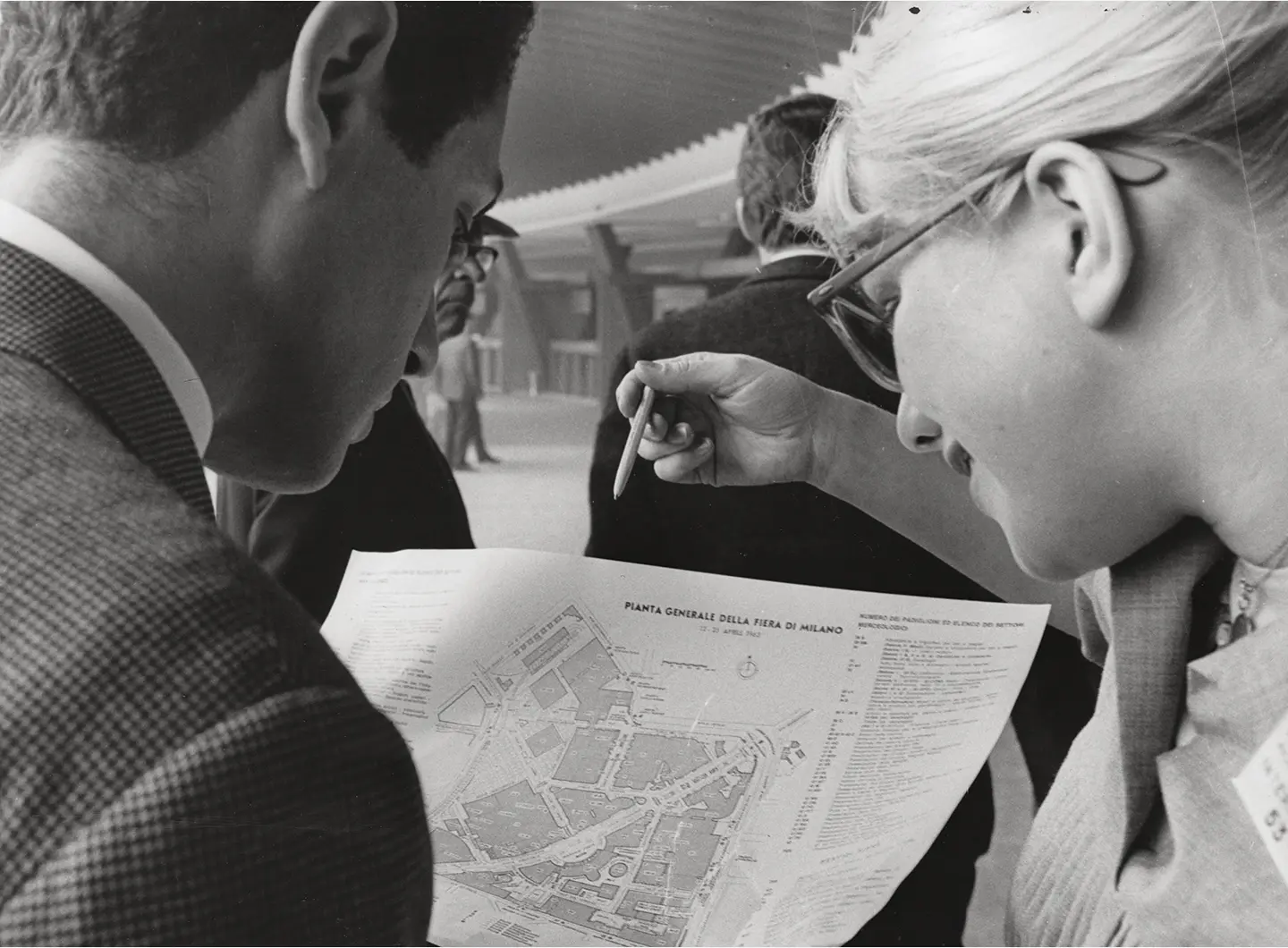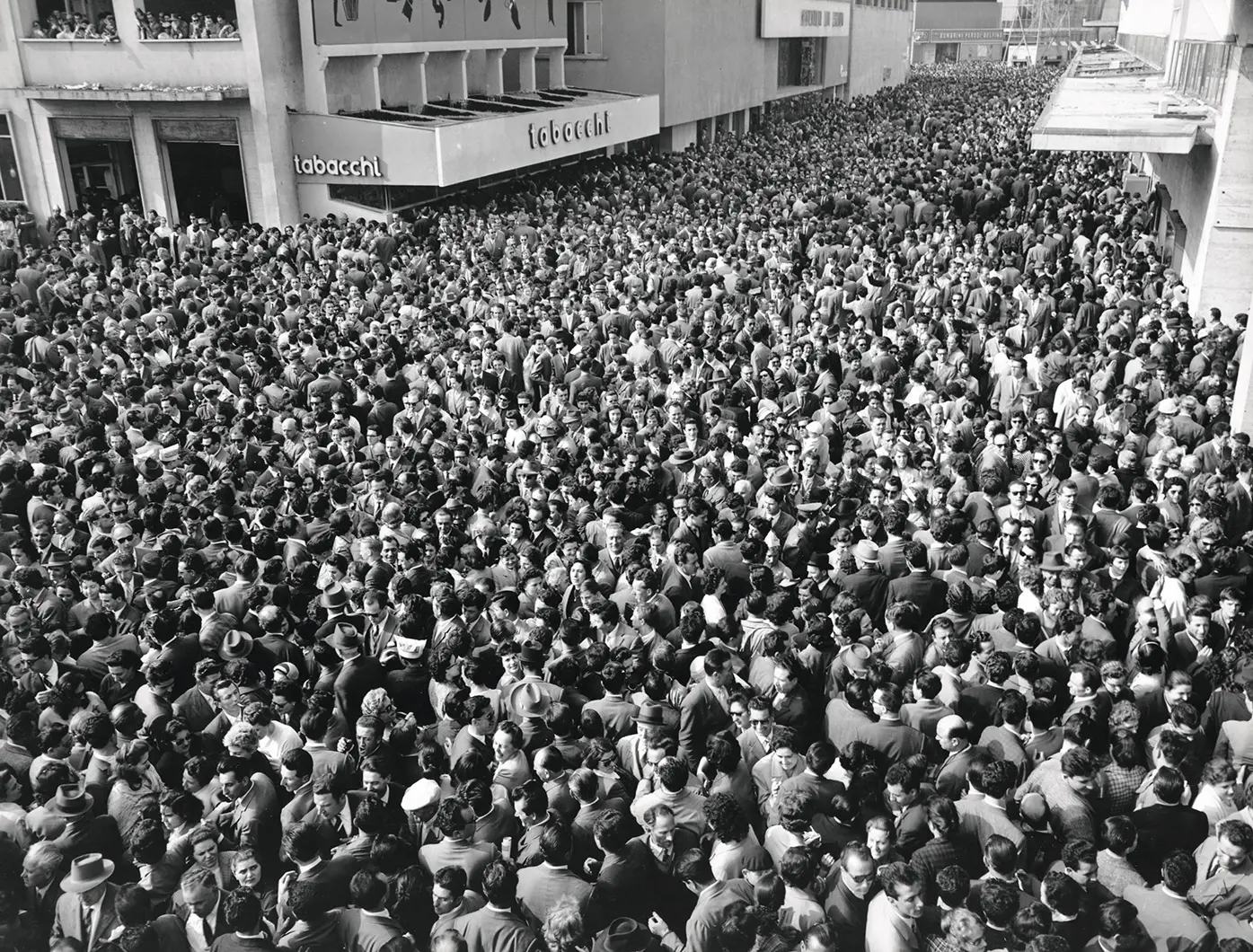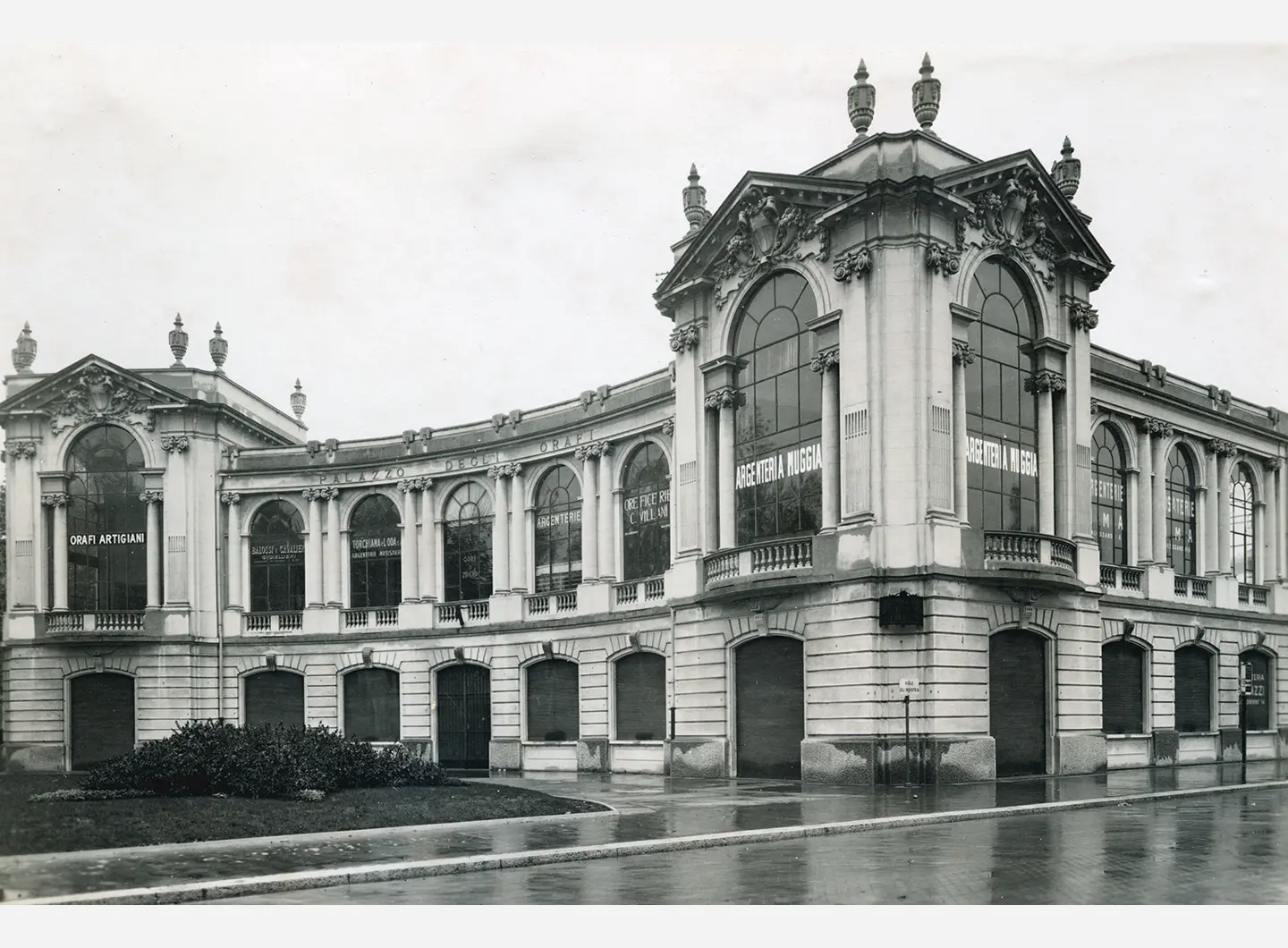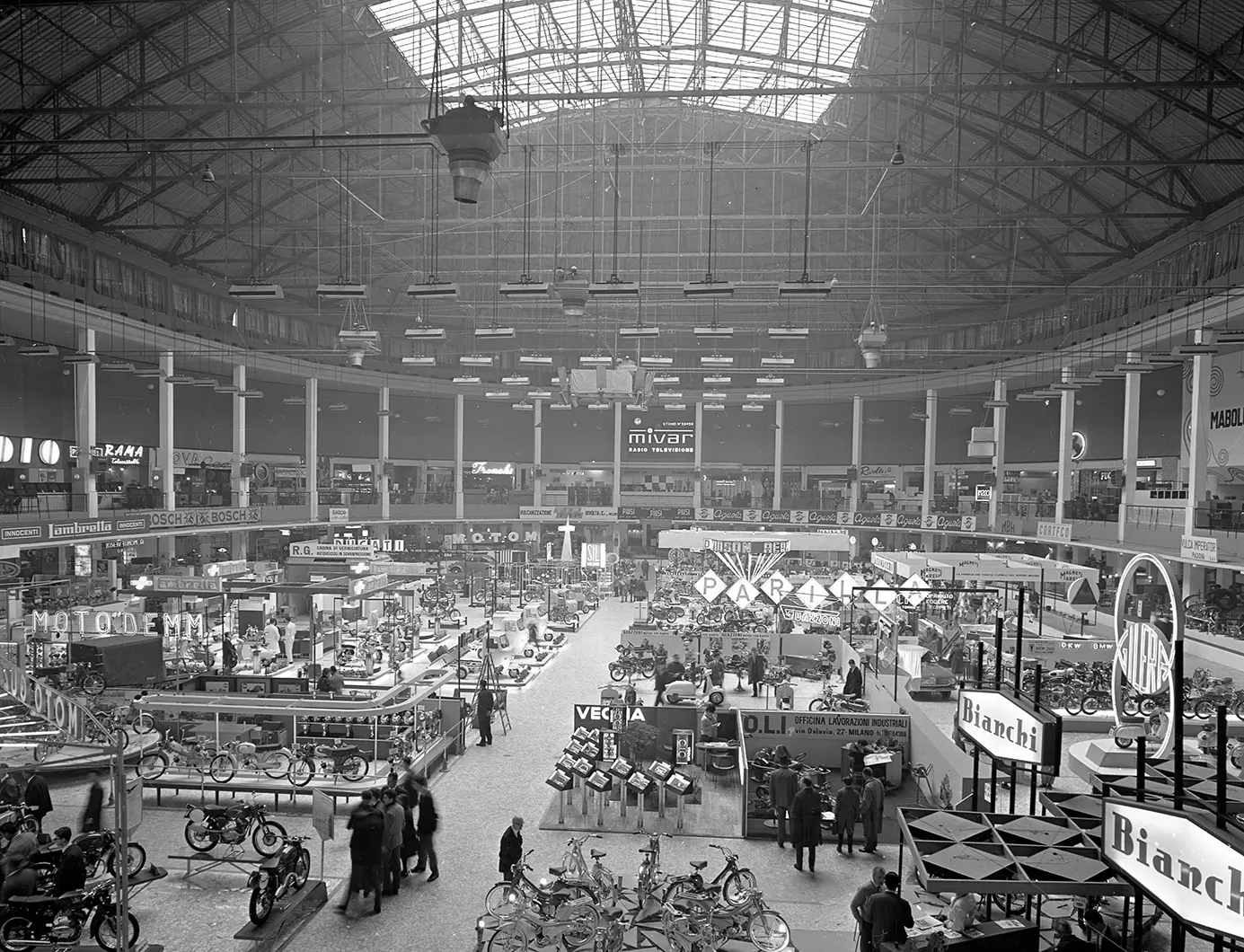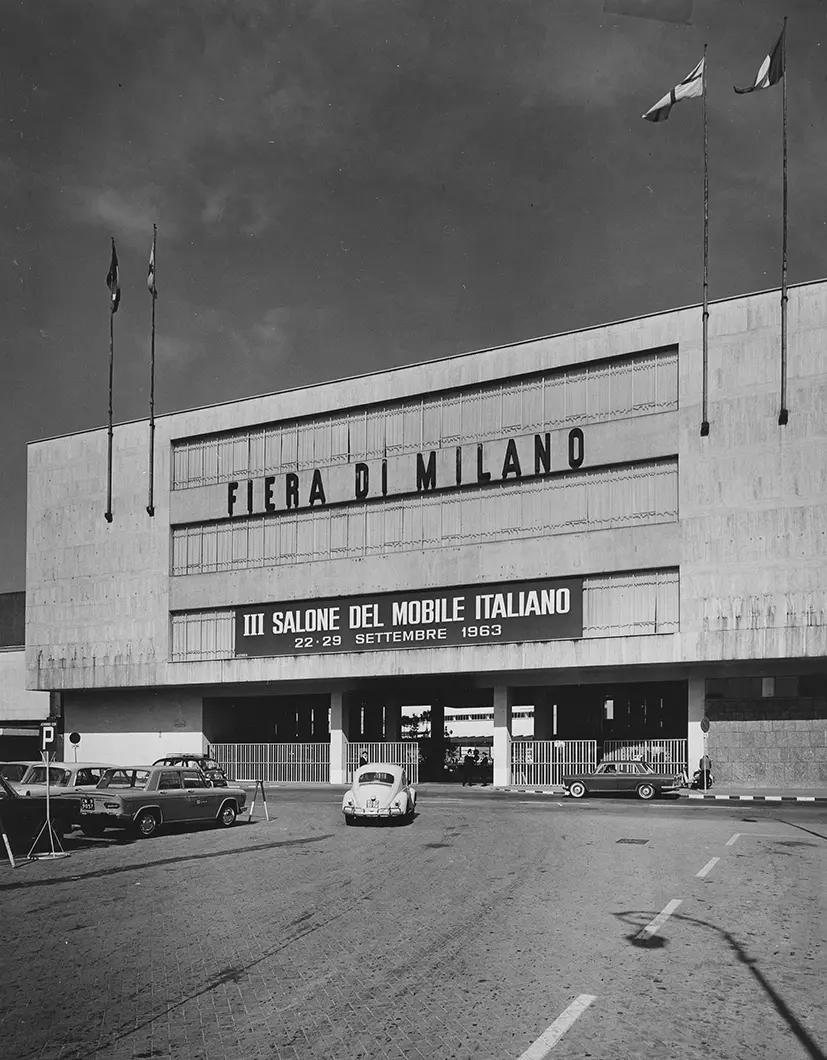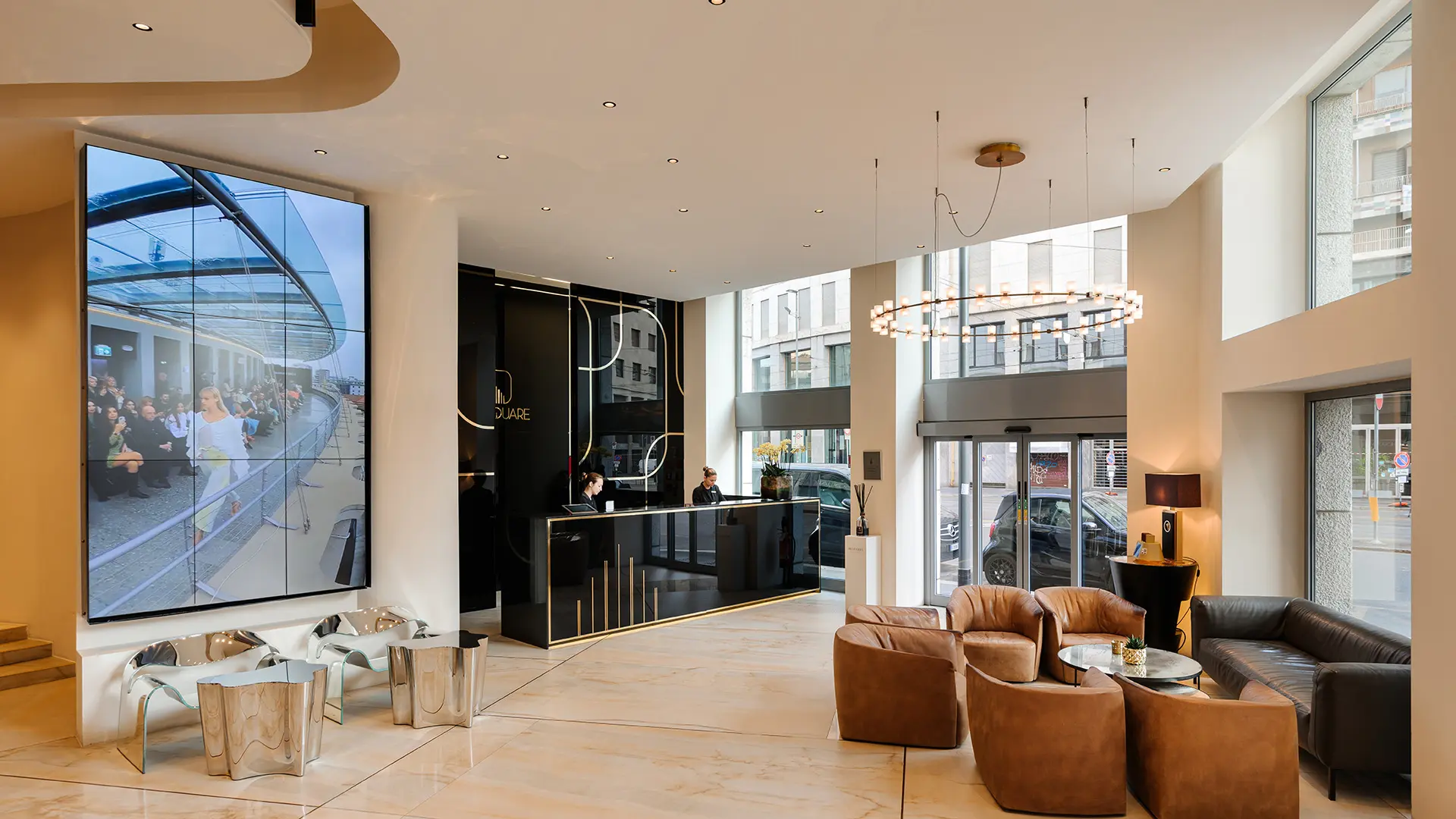In partnership with MiCodmc, a selection of establishments ripe for discovery during the 64th edition of the Salone del Mobile.Milano, from 21 to 26 April 2026
Fondazione Fiera Milano and its precious archive
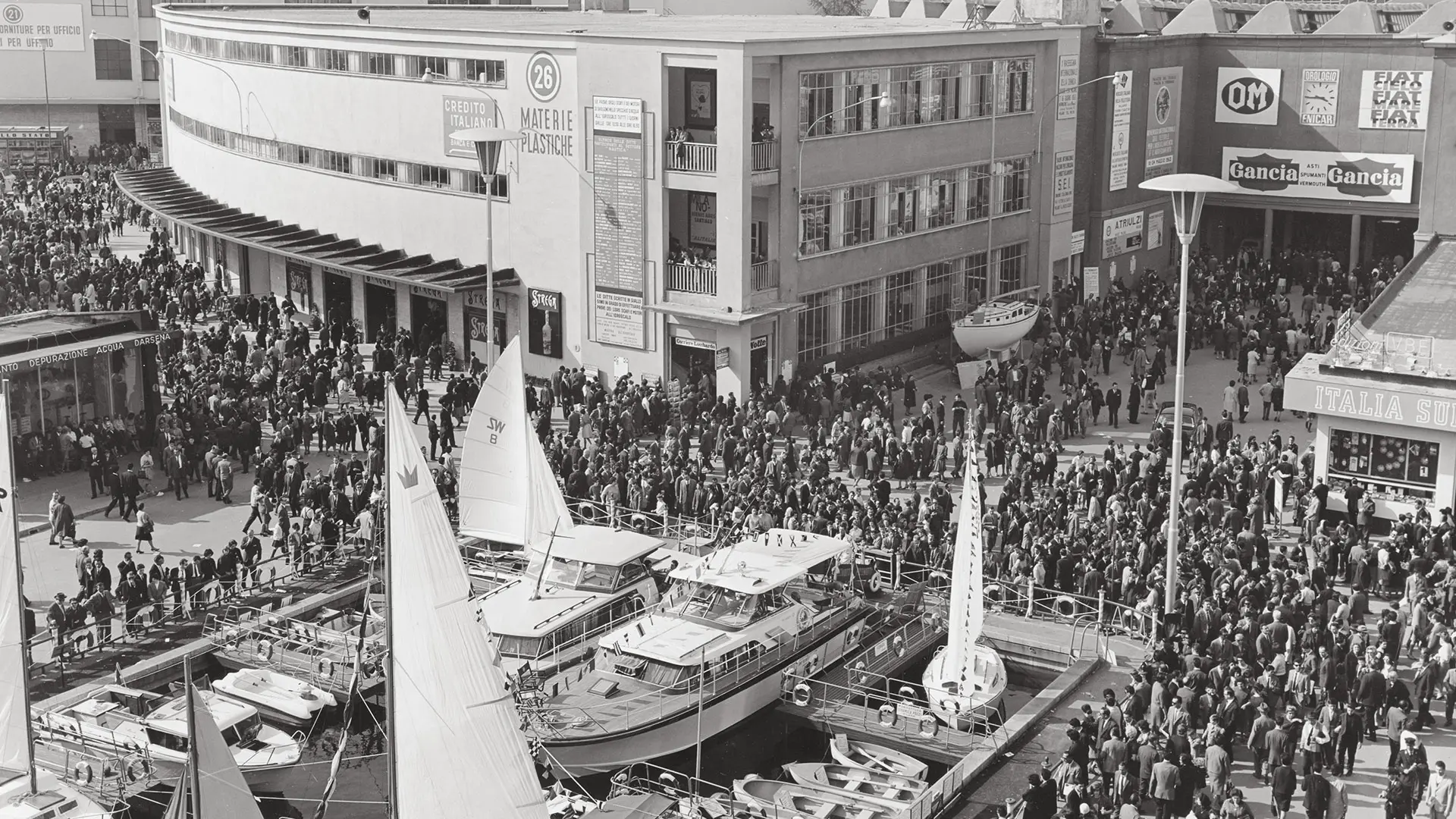
Veduta su piazzale Milano alla Fiera Campionaria di Milano del 1963, photo courtesy Archivio Fondazione Fiera Milano
A collection of documents and curiosities tells the story and illustrates the development of the Milanese fairs, the beating heart and driving force of trade and social relations for the last century
If it’s true that it’s easy to understand what corporate museums are all about – the industrial development of the products, the growth of the companies, their protagonists, the brainwaves and the stubborn efforts – it is also true when the company happens to be an organisation that breathes life into fairs, in which case the exhibit itself is more or less intangible. The historic archive of the Fondazione Fiera Milano, part of the virtuous network of corporate museums, has the arduous task of showcasing its special “product” – in other words the complex, magical system that has helped forge a multitude of relationships between the public and industries, professionals and fans, purchasers and producers, weaving fundamental interpersonal relations round and through the pavilions, just like a social network in real life.
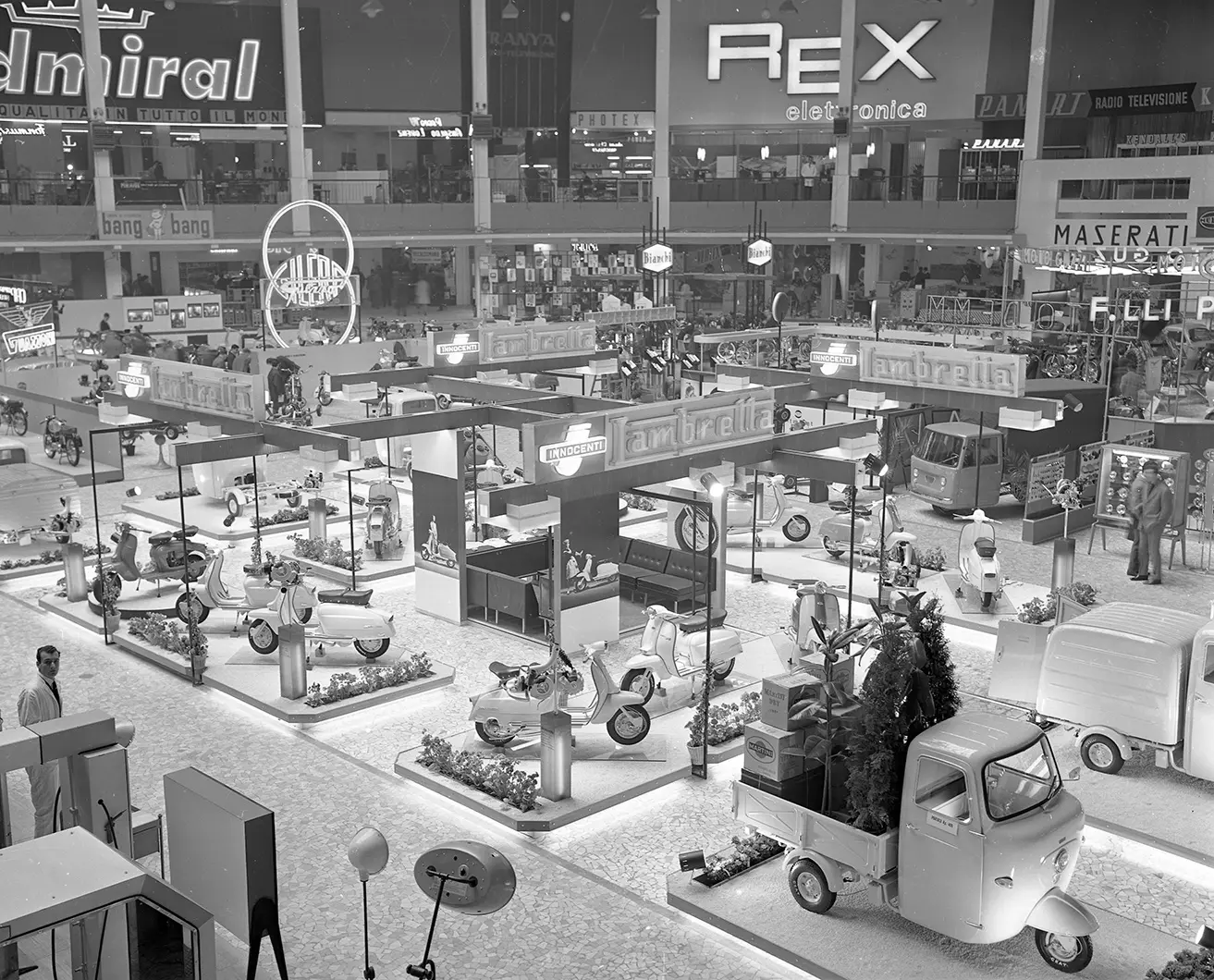
Stand Innocenti alla Fiera Campionaria di Milano del 1963, in primo piano la Lambretta, photo courtesy Archivio Fondazione Fiera Milano
The History of the Fair
The Fiera di Milano started life as the Fiera Campionaria, the first edition of which was held on 12th April 1920, along the Cerchia dei Bastoni city walls all the way from Porta Venezia to Porta Garibaldi, and hosted more than 1,200 exhibitors. With only three editions under its belt, the Fiera moved to the former Piazza d’Armi for the fourth, where it erected its first pavilions. This district to the west of central Milan became home to the Fiera for the next 82 years, a lengthy history that saw the advent of some of what have now become real Made in Italy icons – plastic was presented for the first time (Moplen, patented by the Nobel Prize-winner Giulio Natta), the San Pellegrino orange drink was invented by chance, and Italians got their first glimpse of vehicles that then became synonymous with lifestyles, such as Vespa Piaggio scooters and Moto Guzzi motorbikes.
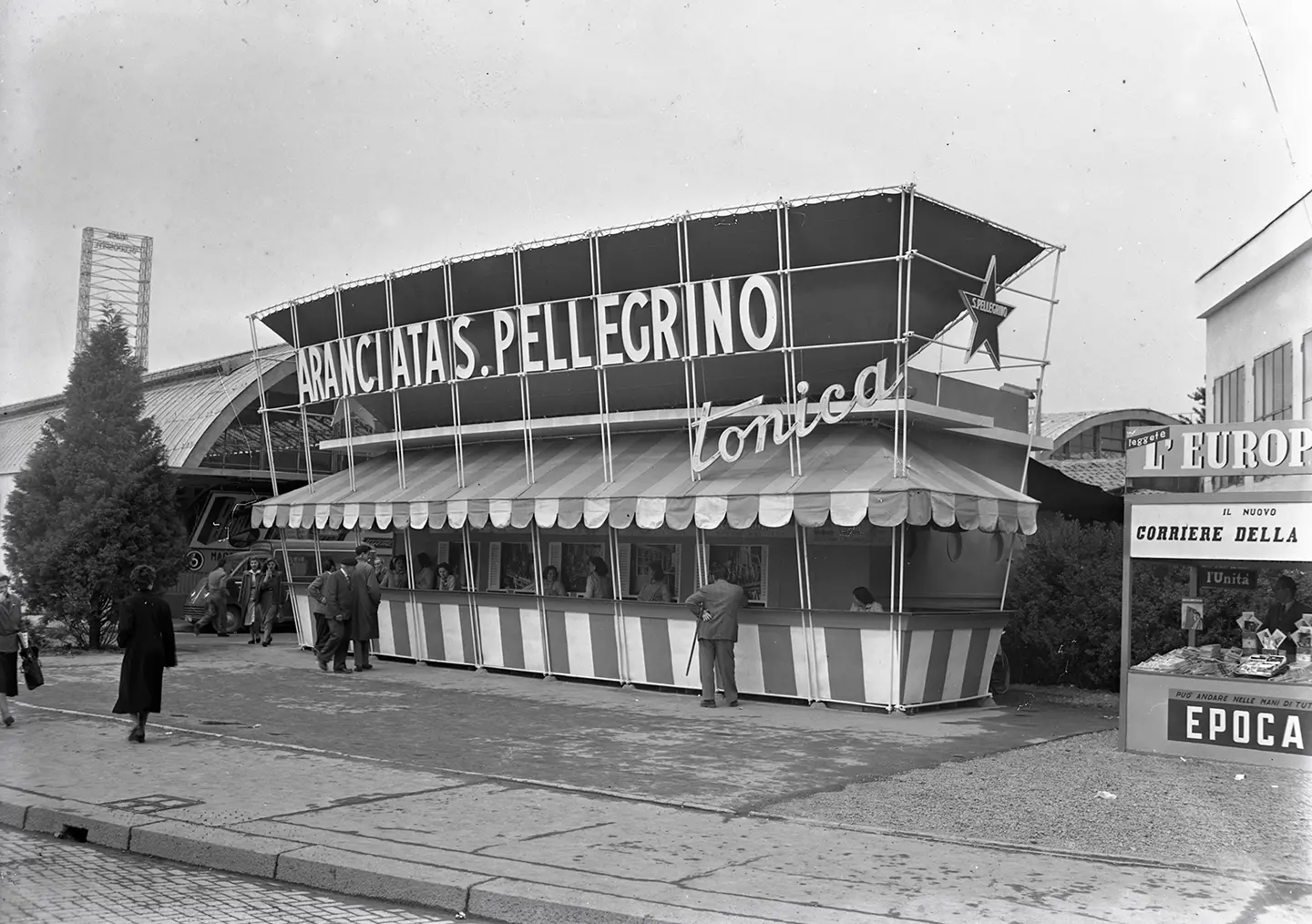
Bar San Pellegrino alla Fiera di Milano nel 1951, photo courtesy Archivio Fondazione Fiera Milano
In the meantime, specialist exhibitions began to be held in tandem with the Fiera Campionaria – the best-known of which was the Salone del Mobile itself, held for the first time in 1961 – as IPACK-IMA-Processing, Packaging and Material Handling or the International Boat Show – proving such an increasingly successful sectoral format with the public that the last edition of the Campionaria was held in 1990.
Read also 60 years of the Salone del Mobile.Milano for those who were not there
In 2002, the Fondazione Fiera Milano started work on the Rho Fairgrounds, designed by Massimiliano Fuksas and inaugurated three years later, on land formerly occupied by the Agip Petroli refinery, while the historic city centre fairground was redeveloped.
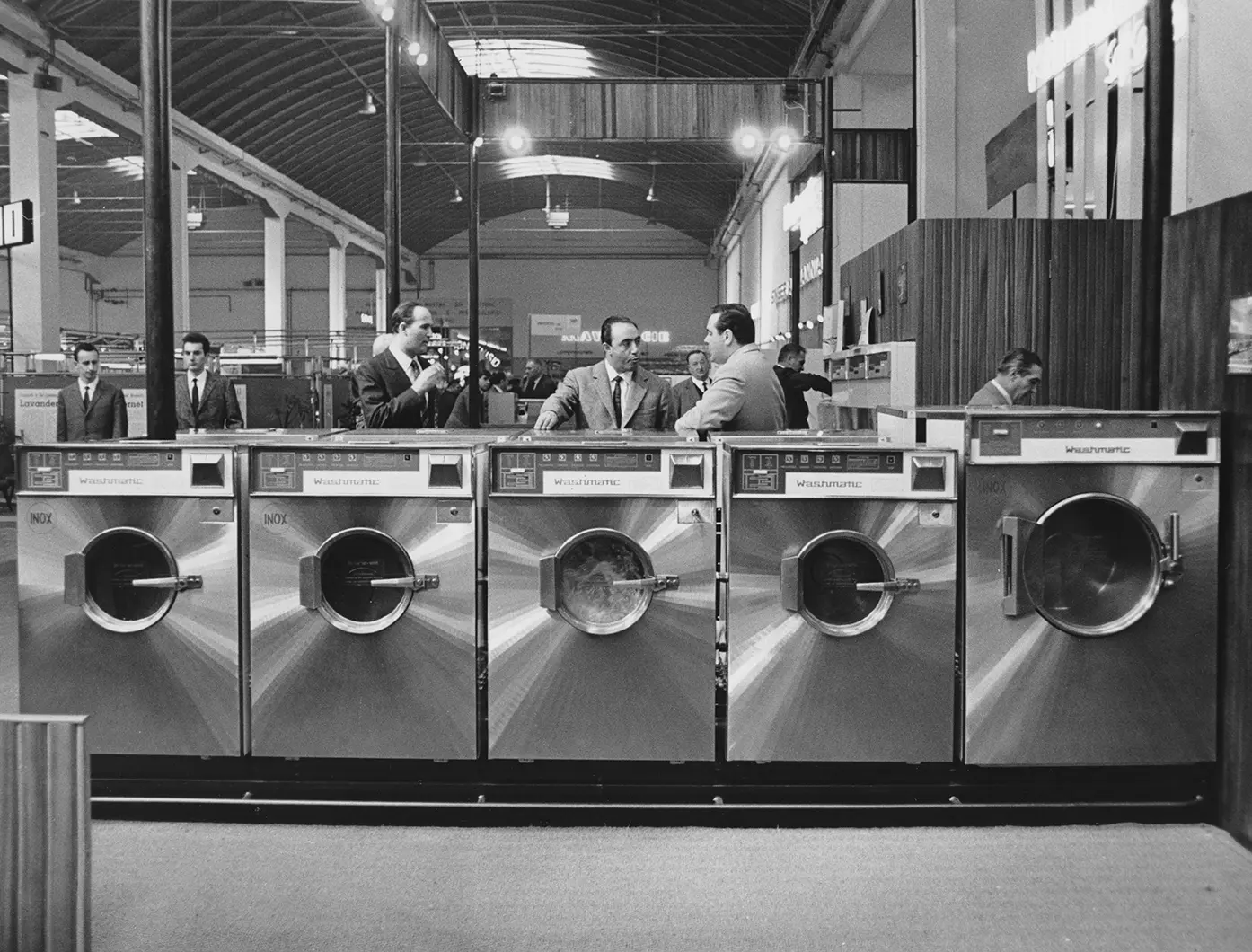
Interno del padiglione macchine per l'industria tessile alla Fiera Campionaria di Milano del 1965, lavabiancherie industriali, photo courtesy Archivio Fondazione Fiera Milano
The Fondazione Archive
The Fondazione Fiera Milano was set up in 2000, against a background of constant changes to Fiera Milano. Its archive – set up when the move to Rho took place in order to free up land within the city – preserves the history of the Fiera with documents produced from 1920 onwards, building a crosscutting narrative that illustrates the development of the alternating exhibitions throughout almost the entire century. The variety of documents conserved in the archive (which is also in Largo Domodossola) is astonishing: posters, photographs, catalogues, newspapers, books and films as well as admission tickets, booklets, guides to hotels and restaurants in the city, business cards and signage instructions, which in turn narrate the stories of the companies, the visitors, the exhibitors and the workers – and there were a great many of them, given that during the 1960s the Fiera Campionaria drew in between 4 and 4.5 visitors each year.
Laid end to end, the collection of documents in the archive measures over one linear kilometre, but the Fondazione Fiera Milano has digitalised and published a large part of its patrimony online on a dedicated and informative website, cataloguing more than 25,000 datasheets for a total of 40,000 digital objects.

Viale dell'industria alla Fiera Campionaria di Milano del 1951, photo courtesy Archivio Fondazione Fiera Milano
The Digital Archive
The archive website contains an exhaustive collection of documents digitalised thus far by the Fondazione Fiera Milano, organised by year, protagonist, support material, object typology and theme, making for a total of 25758 potential search results. A huge number of available digital items that would be hard to negotiate were it not for the themed pathways providing access to transversal or vertical in-depth studies, rather like digital exhibitions, that the Fondazione consistently provides – a gallery of faces and the most notable people that have filled the fair pavilions. There’s a selection of the illustrated publicity materials and periodicals that played a leading role in the history of the Fiera since 1920 and even the story of the small inventions, to which a special pavilion was devoted during the 1950s, where patents could be registered and contact made with the large industries that the emerging young and not so young inventors had an opportunity to approach with their proposals. The archive’s themed pathways do not simply explore the history and the development of the Fiera di Milano, they also provide snapshots of everyday life of the past, unseen glimpses of the golden age of industry, useful reflections and material that flesh out the story of an extraordinary expositive adventure, both from a historic point of view and, especially, from a social, everyday and shared one.
Leveraging its precious wealth of material, the Fondazione Fiera Milano archive will accompany us through the next few months – while salonemilano.it flags up some of the things we can expect from the 60th edition of the Salone del Mobile.Milano – filling us in on some of the adventures of Made in Italy, the design pieces that have seen it become a global icon, the companies that have helped the event grow year after year and the protagonists that have breathed life into it, unveiling nuggets of information from times past, anecdotes, curiosities and impressive tales of excellence.


 Exhibitions
Exhibitions
